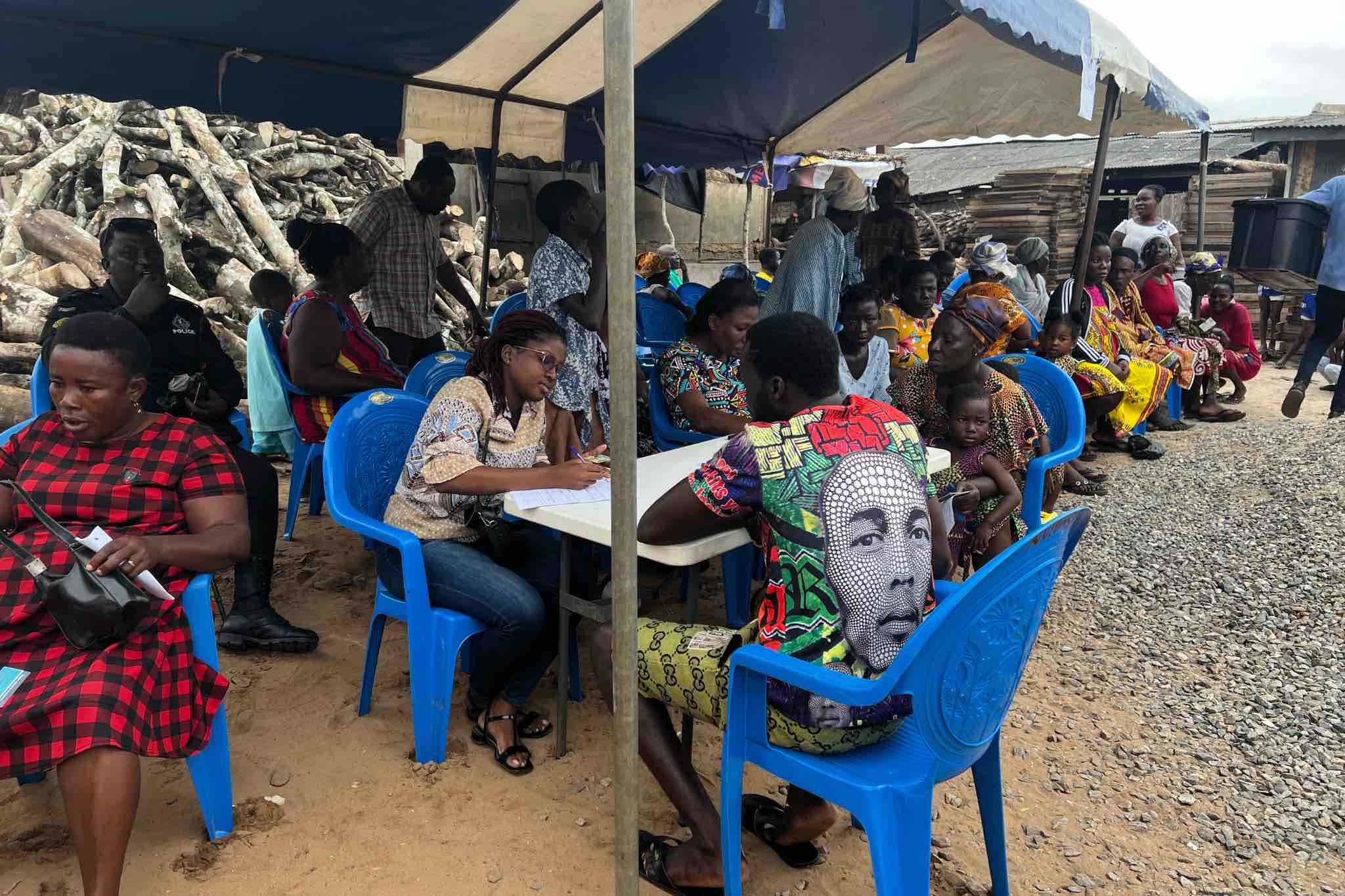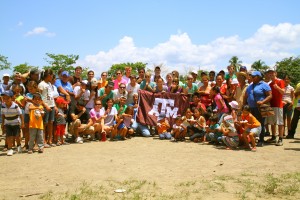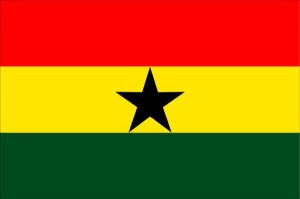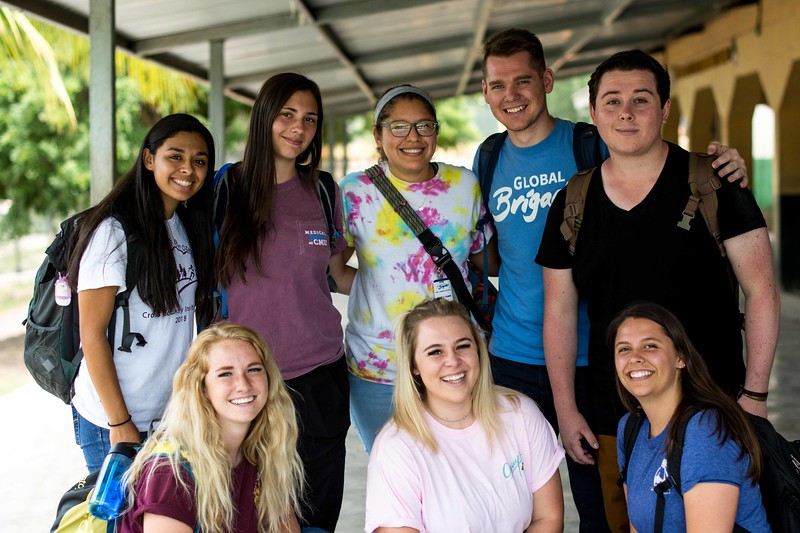Global Brigades follows a thoughtful and structured approach when selecting partner communities, with a strong focus on long-term self-sufficiency to maintain health and economic development projects. While we have a well-established protocol to guide us, our methodologies are adaptable to meet the needs of each program.
A key part of this approach is ensuring that communities demonstrate a genuine need for support and actively request our involvement. This is essential to our Holistic Model, which aims to empower communities to achieve sustainable development independently.
Identifying Potential Partner Communities
Global Brigades identifies potential partner communities in a few different ways, but the emphasis is on the impact we could have on sustainable public health and economic gains.
Possible methods of identifying partners include:
- Staff initiatives: Brigade staff on the ground actively seek out partners or encounter potential communities on field visits to neighboring areas. This allows us to observe conditions and needs directly to determine whether our programs would be a good fit.
- Community leader requests: Many communities initiate contact with Global Brigades via written letters, a visit to our office, or an informal meeting in the community itself. This creates a solid foundation for a partnership where the community is fully engaged.
- Government collaboration: Global Brigades maintains close relationships with local governments at the district and municipal levels to identify communities or support pending projects that require extra help.
- Partner organizations: This is one of the most common methods of outreach. We reach out to potential partner organizations and vice versa about the possibility of joint programs. This allows for the pooling of resources and expertise to amplify our impact.
- Complementary initiatives: As initiatives like Eskala – our Microfinance Program – grow, we identify partner communities through farm cooperatives and agricultural production associations on the ground. These groups typically work with rural communities that may benefit from our programs.
Global Medical Brigades is the largest student-led movement for global health. Our priority is long-term sustainability and empowerment in our partner communities.
Criteria for Selection
Global Brigades uses a set of basic criteria to assess whether a community is a good fit for a partnership. These standards ensure that we can meet our mission of working effectively and collaboratively with each community while addressing specific needs in their focus areas.
Guidelines can vary by community but generally include:
- Existing leadership structure: Ideally, there is established community leadership or a community group that can facilitate meetings and help evaluate the community's needs. This is crucial for long-term collaboration.
- Identifiable needs: The local community has a clear need in at least one of our areas of focus. These include healthcare and health education workshops, Water, Sanitation, and Hygiene (WASH), including access to clean water, or economic development.
- Local permission: At a minimum, Global Brigades requires permission from the local government to work within a partner community. Ideally, there is active support from leadership, as well.
- Community size: Partner communities typically fall within a population range of 100 to 2,000 people. There are exceptions, such as in our programs in Ghana, where communities are larger due to a denser population.
- Volunteer safety and accessibility: Communities should be safe and accessible by vehicle and ideally located near lodging facilities for volunteers. (Communities that don’t meet this standard aren’t always excluded; we just wouldn’t send volunteers there.)
These processes help us stand out from other medical volunteering programs and non-profit organizations. Our focus is always on sustainable development over short-term aid, and the end goal is self-sufficiency.
A vital piece of that is collaborating with local professionals. Partnering in this way helps us see whether our goals align with local priorities. We’re able to gather valuable insights into community needs and available resources while building trust within that community.
Rapid Needs Assessment (RNA)
Once a potential partner is identified, our teams visit the community for consultations with leaders to discuss potential collaboration and conduct a Rapid Needs Assessment (RNA).
This tool, developed by our Monitoring and Evaluation (M&E) Team, combines quantitative and qualitative methods to help us get a better picture of a potential partnership.
Using the RNA, we collect the following information:
- Basic demographic data: This includes population size, age distribution, and other key demographic details about the community that will better inform our programming.
- Program-specific information: This includes details on existing infrastructure, community groups, training programs, available resources, and specific areas of need.
- Additional useful information: We look at factors such as safety and security in the area, road conditions, travel times, and any other development organizations currently working in the area. We gather contacts for community leaders and community health workers.
This comprehensive assessment helps us clearly see each community's unique needs and future support for volunteers. The result is a stronger foundation for successful, sustainable partnerships in our Program Countries over short-term voluntourism efforts.
Making the Final Decision
The final decision to partner with a community is made after considering both the data collected during the RNA and in-country pre-assessment information gathered initially by local teams.
All of this information is reviewed collectively to make sure that the community not only has identifiable needs but also aligns with Global Brigades’ mission and logistical requirements. This comes down to whether our programs can make a sustainable impact while ensuring a safe, effective environment for community members, Brigade staff, and volunteers.
After this thorough evaluation, Global Brigades can move forward with a partnership that has a strong foundation for collaboration and sustainability. From there, consistent evaluation ensures that we’re monitoring the impact of our collective work and adjusting as needed along the way.
A successful example of a partnership is the community bank model implemented in the rural communities of Piriatí, Pueblo Nuevo, and Digir in Panama. We worked with key stakeholders to create economic opportunities and foster resilience despite development challenges.
This is one of many collaborative partnerships at work that empower communities to address both immediate challenges and long-term health, economic, and infrastructure needs.
How You Can Help Make An Impact
As a Global Brigades volunteer, you have the unique opportunity to make a tangible difference in our partner communities. You become part of a collaborative movement that prioritizes sustainable development goals in under-resourced communities.
Your efforts don’t just support our programming during the length of your volunteer trip.
Whether on the ground in medical clinics at sites like Greece, Honduras, Belize, or Guatemala or participating in Medical Brigades, your contribution plays a critical role. You become part of the success of our year-round initiatives to empower communities and create lasting change.
If you’re interested in partnering with us to support more sustainable global health, consider joining a Medical Brigade.







